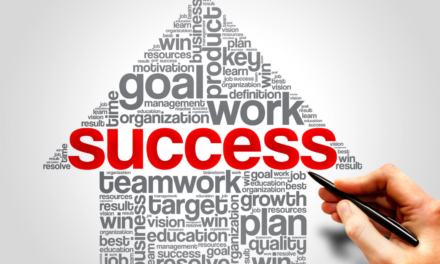
The Revenue Leader’s Guide to Strategic Cost Optimization

Revenue programs at mid-market and enterprise levels often accumulate inefficiencies through legacy processes, changes in leadership, fragmented systems, and misaligned incentives. Below is a detailed analysis of strategies to eliminate waste while maintaining operational effectiveness, supported by data-driven approaches and organizational realignment.
1. Tech Stack Consolidation and Automation
Platform-Based Integration
Consolidating disparate revenue technologies into unified platforms reduces licensing costs, eliminates data silos, and improves cross-functional visibility. For example, integrating CRM, incentive compensation management, and forecasting tools into a single revenue performance platform can reduce administrative overhead by 30–40% while improving forecast accuracy. Enterprises like Olympus EMEA have achieved 25% faster internal revenue decision-making by synchronizing pipeline data with real-time commission calculations.
AI-Driven Process Optimization
Artificial intelligence reduces manual labor in repetitive tasks while enhancing precision. Predictive analytics can automate 60–70% of sales forecasting workflows, minimizing human error. Many sales platforms have predictive analytics built in, or integrate with automated systems. Accurate forecasting makes needs in the sales and enablement departments more clear and makes addressing them more timely.
Additionally, ChatGPT and similar AI tools can recommend automated workflows and help you set them up. Just explain your situation and your tech stack, and it will walk you through your build, step by step. You can have AI fill in CRM data, reply to Slack, and even reply accurately to account emails!
| Role | Common Email Automations |
| SDRs | Sequences, lead follow-up, “no reply” nudges, calendar booking |
| AEs | Post-demo follow-ups, proposal delivery, trial check-ins |
| CSMs | Onboarding steps, renewal alerts, support deflection |
| Support | Ticket confirmations, SLA warnings, product update notices |
2. Headcount Optimization Through Data-Driven Planning
Bottom-Up Capacity Modeling
Adopting a bottoms-up headcount planning approach ensures staffing aligns with actual revenue potential rather than arbitrary growth targets. By analyzing metrics like accounts per rep, win rates, and ramp time, organizations have a clear picture of what each seller seat yields. They can calculate how many sellers are underperforming, and build that into their headcount planning. In this way, teams can right-size teams while maintaining 1.5 – 2x revenue growth. For example, grouping new hires in H2 instead of opening a rec with each departure, the efficient enablement support can reduce year end CAC by 25% while improving rep productivity.
Strategic Workforce Reallocation
Moving non-core operational tasks (e.g., CRM maintenance, data hygiene) to IT departments centralizes expertise and reduces redundant roles. This shift has enabled companies like D&W Food Centers to cut shrink by 1.5% monthly through cross-departmental process ownership. It makes little sense to apply a $70/hr person to a $45/hr job.
3. Territory and Compensation Plan Redesign
Dynamic Territory Alignment
Redrawing sales territories based on real-time market potential and rep capacity improves coverage efficiency by 20–30%. Lucidchart’s 2024 analysis shows aligned territories can reduce travel time by 15%.
Reps who understand a specific geography intimately often have a stronger understanding of, and bond with, their accounts. Strong territory alignment can increase deal closure rates by aligning the right reps with high-value accounts.
Machine learning models can optimize territory boundaries quarterly, adjusting for seasonal demand shifts.
Performance-Linked Compensation
Transitioning from fixed salaries to variable comp plans tied to profitability metrics (e.g., net revenue retention, CLV) reduces fixed costs while incentivizing strategic behavior. Companies using tiered commission structures report 12–18% higher rep productivity without increasing overall compensation spend.
4. Customer Acquisition Cost Management
Focusing on CAC is a smart lever for cost optimization, but only when balanced with strategic growth goals and internal sustainability. You may already have optimized your CAC, but if it’s been a while since you’ve done an internal CAC audit, do it carefully. Blindly slashing expenses risks starving innovation, burning teams, and undermining long-term revenue health.
Positive Effects on Cost Optimization
1. Improved Unit Economics
- Lower CAC = Higher margin per customer
- Makes the business more scalable and attractive to investors
2. Better Spend Discipline
- Forces marketing and sales to track ROI closely
- Cuts underperforming channels, ineffective tech tools, or inefficient ad spend
- Improves hiring metrics to reduce first year attrition
3. Alignment Across Revenue Teams
- Promotes collaboration between sales, marketing, and CS to improve conversion rates
- Encourages shared goals like improving MQL to SQL to close rate
4. Incentivizes Customer Fit & Quality
- Focusing on CAC often shifts attention to ICP (Ideal Customer Profile) targeting
- Leads to higher retention, lower churn, and better CLTV (Customer Lifetime Value)
Potential Negative Internal Effects
Unfortunately, it is easy to make cuts if your only goal is to cut costs. Strategic management of cost-cutting will effectively mitigate these downstream problems.
1. Short-Term Thinking or “Lead Hoarding”
- Teams may prioritize low-cost leads at the expense of strategic, high-value ones
- Might ignore ABM, outbound, or partner plays that take longer to convert but have higher lifetime value
- Create a “Rot Date” after which a deal is dead, or manage territories. Alternatively, assign books of business directly.
2. Pressure on Sales & SDR Teams
- Teams may be pushed to do more with less, leading to burnout or poor morale
- May increase rep attrition if targets feel impossible with reduced budget
- Counterintuitively, often increasing headcount will improve CAC by reps having the time and focus to do better work.
3. Quality Trade-offs in Tools or Talent
- Budget cuts to reduce CAC may lead to underinvestment in sales enablement, tools, or training. This can result in lower win rates or inconsistent messaging.
- Instead, perform an audit of how often tools are utilized, and in what way. Perhaps your tech stack is ideal. Perhaps you have tools that are expensive, and rarely utilized. Find out, and decide accordingly.
4. Misaligned Incentives
- Marketing might optimize for cheap leads, while sales needs qualified buyers
- CAC-focused metrics can drive silos or finger-pointing if not paired with quality measures like SQL conversion or revenue per lead
- Sales and marketing leadership should work together to identify the strongest qualification pairing on both sides of the line. MQL should drive a strong “advancement to opportunity” metric, while SQL should drive strong closing ratios. If either of these is not true, it’s time for an update.
Management Strategies
To avoid unintended negative consequences, companies that focus on CAC should:
- Invest in enablement and automation: So sales and support teams can do more with less—without burnout
- Balance CAC with CLTV: Track CAC:CLTV ratio and optimize toward lifetime value, not just cost
- Segment CAC by channel & buyer persona: Not all customers cost the same to acquire—and that’s okay
- Pair CAC goals with quality metrics: Like conversion rates, deal velocity, NPS, and retention
5. Cross-Functional Realignment and Collaboration
Breaking Down Silos
Misalignment between sales, marketing, and customer success costs enterprises 10% of annual revenue due to duplicated efforts and lost leads. Implementing shared KPIs like customer lifetime value (CLV) and net revenue retention (NRR) fosters accountability across the three departments.
Centralized Enablement via L&D
Moving some repetitive enablement functions to Learning & Development (L&D) departments professionalizes training while reducing redundant content creation. LearnOps® frameworks at organizations like Olympus EMEA have cut onboarding time by 40% by standardizing curricula and integrating performance analytics.
6. AI and Automation in Revenue Operations
Intelligent Process Automation (IPA)
Deploying AI for contract analysis, proposal generation, and renewal management reduces manual work by 50–70%. For example, AI-driven document processing in healthcare has slashed administrative waste by $12B annually4—a model applicable to revenue teams through automated quote-to-cash workflows. Your tools likely already have that capability. Are you using it?
Predictive Customer Insights
On average, it costs more than 12x original CAC to win a customer back once they churn.AI tools analyze historical deal data to identify at-risk accounts 30–45 days earlier than traditional methods, improving retention rates by 8–10%. Most Customer Success software have this capability. Are you utilizing it?
7. Cost-Effective Technology Migration
Cloud-Native Solutions
Migrating on-premise systems to cloud platforms reduces infrastructure costs by 25–35% while enabling scalability. Subscription-based pricing models allow enterprises to align software expenses with usage, avoiding over-provisioning. Cloud native systems are not affected by on site problems like weather, theft, fire, and other catastrophic damages to equipment present on site. For most businesses, this is an easy optimization.
Outsourcing Non-Core IT Functions
Partnering with third-party providers for CRM customization and data analytics cuts in-house IT costs by 40–50% while accessing specialized expertise. Contrary to popular belief, the time and money invested in internal customization and analytics rarely yields downstream benefits.
8. Continuous Improvement Frameworks
Lean Waste Elimination
Adopting lean principles to map and eliminate non-value-added activities in sales cycles reduces process waste by 15 – 20%. Ex. Skill coaching by frontline managers has been shown to be more effective than deal coaching, and takes less time. Techniques like automated demos and email cadences cut costs by up to 80% – applicable to both sales and tech teams – while driving significantly higher close rates. Find lean motions, combining multiple accrued benefits, and you’ll drive costs down quickly.
Conclusion
Trimming waste in revenue programs requires a holistic approach combining technology consolidation, workforce optimization, and cultural realignment. By leveraging AI for automation, reallocating functions to specialized departments, and adopting data-driven planning models, enterprises can achieve 15 – 30% total deal cost reductions without sacrificing growth. Critical to success is securing executive buy-in through ROI-focused business cases (e.g., quantifying the impact of misalignment on revenue) and embedding continuous improvement into organizational DNA.
































